Location: Melrose, Roxburghshire, Scottish Borders, Scotland
kind of building: monastery
today: mostly ruined, opened to public
public transport: regular buses to Melrose, trains to Galashiels and Tweedbank (from Edinburgh)
scheduled monument: yes
managed by: Historic Environment Scotland
entrance fee (subject to changes): from £ 3.50 (adults)
opening times (subject to changes): 1 Apr to 30 Sept: Daily, 10am to 5pm Last entry 4.30pm 1 Oct to 31 Mar: Daily, 10am to 4pm Last entry 3.30pm Closed for lunch (Oct to Mar), 12 noon to 1pm.
directions: Google Maps
Melrose Abbey is located in the heart of Melrose in the Scottish Borders, famously known as one of the 4 Border Abbeys (connected by the Border Abbey Way). The abbey itself is a ruin these days and has been established in 1136 as a Cistercian abbey in the Diocese of Glasgow. During the wars of Independence just as the other Border Abbeys it was mostly demolished and so you can say that it was disestablished around 1609.
Site note: some people might say that there were once 5 Border Abbeys and in some aspects, they are right, there once was an abbey in Selkirk as well which these days is not really visible anymore so if someone speaks about 5 border abbeys you now know why 😊
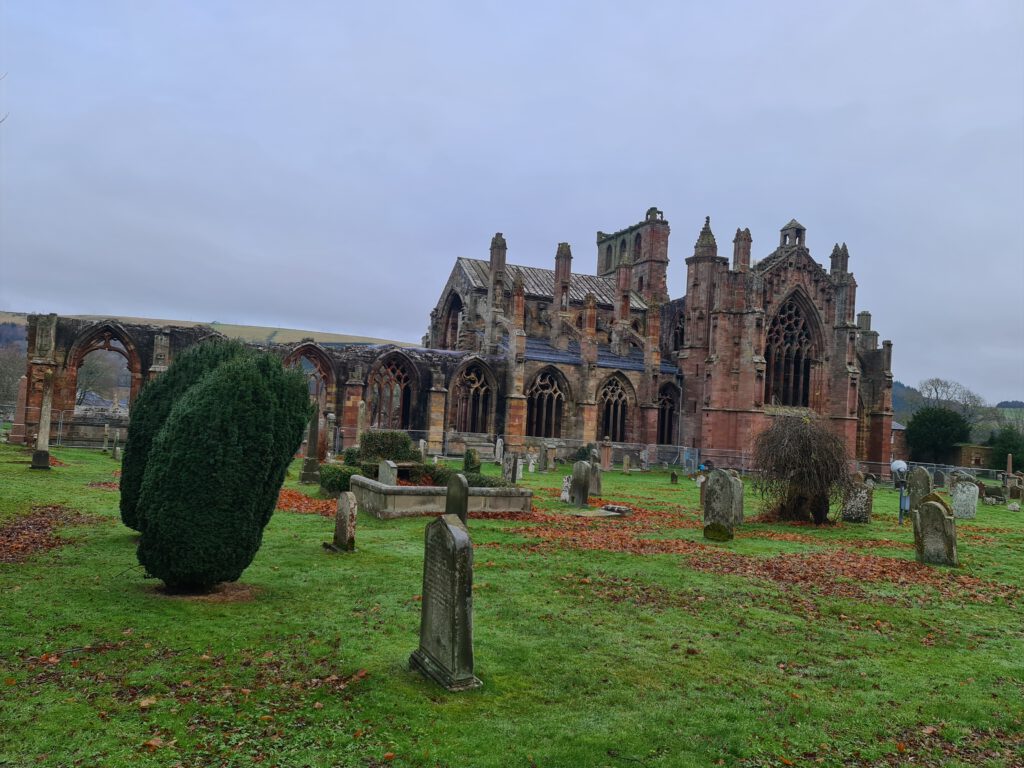
Like Jedburgh Abbey, Melrose Abbey was founded at the request of King David I of Scotland as St Mary’s Abbey, Melrose more commonly referred to as Melrose Abbey. The Cistercian monks used the abbey as the chief house for there order in the country up until the Reformation, headed by the abbot or commendatore of Melrose.
With saying that the abbey was built in 1136 it has to be said that this was when the building process started and as you might guess for a building of this size it took quite a bit of time to finish it. The east end of the abbey is said to have been completed around 1145 whereas the other buildings of this massive complex were added in the following fifty years. Like Jedburgh Abbey the abbey itself was built in the form of a St. John’s Cross which you can still see this day though the very badly ruined status of the complex.
Although the abbey we know today is known as Melrose Abbey, there is an even older monastery which was referred to as Old Melrose, I am mentioning that since the famous Saint Cuthbert grew up nearby and trained at Old Melrose Abbey. This old Melrose was located about two miles east of Melrose Abbey as we know it today. However, the site was raided by Kenneth I of Scotland in 839 so there is no wonder that we only know one Melrose Abbey today and the Old Melrose Abbey was mostly forgotten.
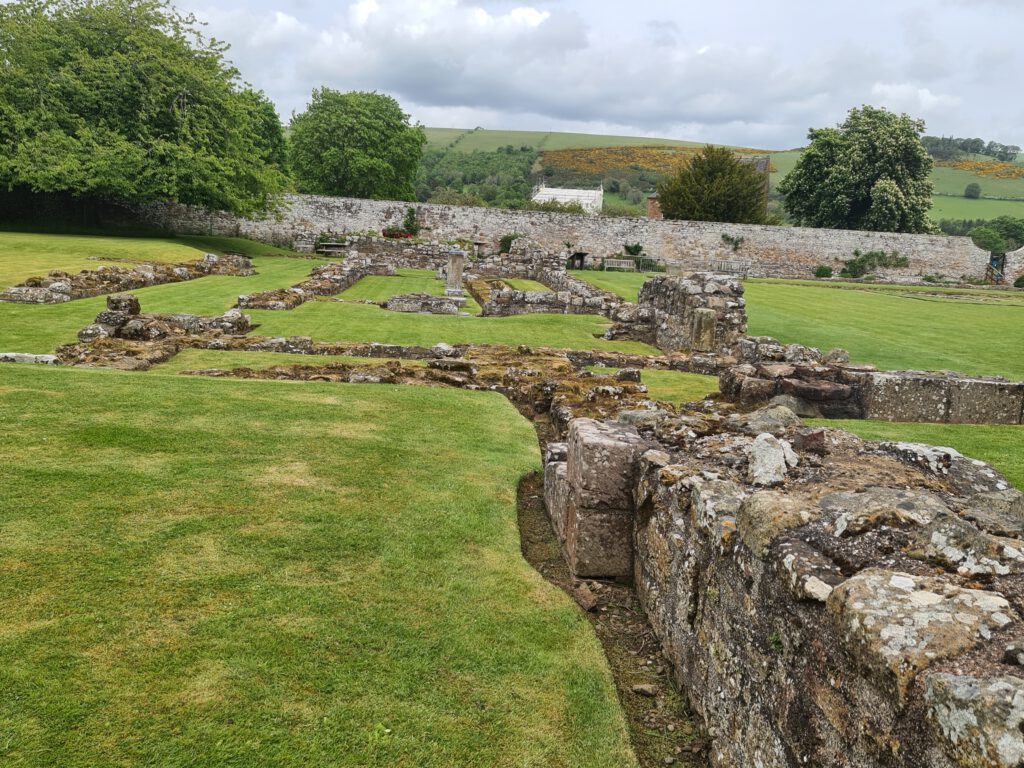
Counting as the first Cistercian King David I wanted the abbey to be built on the sight of Old Melrose Abbey, however the Cistercians thought the land wasn’t good enough for farming, so the sight was changed.
Implementing new farming techniques and marketing Melrose wool throughout the great trading ports across northern Europe, the Cistercians helped the town of Melrose to grow slowly around the abbey and during times of famine four thousands of starving people were fed by the monastery for three months.
The abbey being famed for its wealth even the stepson of King David at one time was abbot of Melrose, endowing it with a reputation for sanctity and learning making it not just one but the premier abbey in Scotland. After his death St. Waltheof was laid to rest in the chapter house and by that the abbey became the focus of pilgrimage for many.
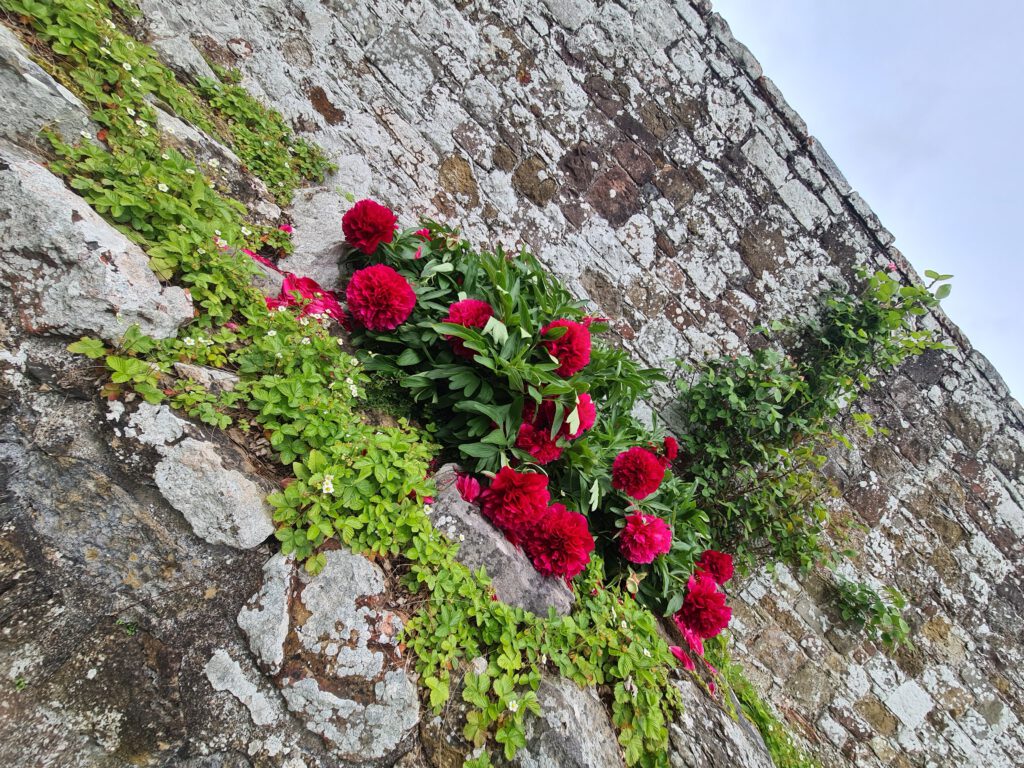
Positioned on one of the main roads running from Edinburgh to the south, Melrose abbey has always been very vulnerable to attack which you can see to this day, with the abbey being mostly destroyed by the army of Edward II in 1322. Robert the Bruce, who’s name you won’t have heard a last time today, gave order to rebuild the abbey. However, just a couple of years later in 1385 it was burned by the army of Richard II of England, forcing King Robert II’s army back to Edinburgh. Following that the rebuilding took place over a period of roughly 100 years leaving it still unfinished when James IV visited in 1504.
Being again damaged pretty badly in 1544 during the Rough Wooing, it was never fully repaired, following that the working monastery declined with James Stuart (an illegitimate son of James V) being the last abbot until his death in 1557. The last monk at Melrose died in 1590.
Though the abbey mostly being destroyed in the Rough Wooing there are still marks from bombardment of Oliver Cromwell’s troops during the English Civil War. However, the township of Melrose kept on using parts of the abbey church by converting it into a parish church, this church was in use until 1810 when a new church was built in Melrose itself.

Sir Walter supervised the extensive repair work taken out on the abbey ruin in 1822, preserving the ruins. Years later in 1918 the duke of Buccleuch gave the ruins to the state.
Around the end of the 20th-century the name Robert the Bruce appears back in the picture (yes, I know hundreds of years after his death…). It was in 1996 when a conical lead container was unearthed during archaeological excavations, this container contained a still recognisable human heart in think black liquor.
Since there were never any records of hearts being buried at Melrose except of Robert the Bruce’s heart it was assumed that the one found was his. On 22 June 1998 the container was reburied at Melrose abbey, placed under a memorial stone.
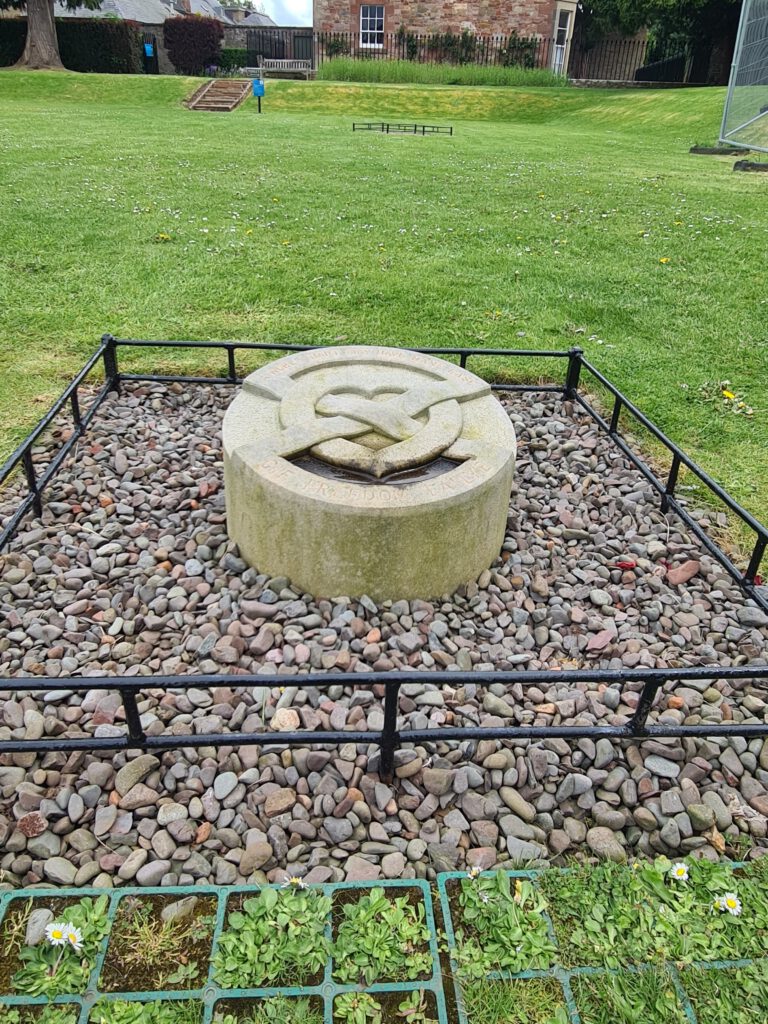
However, Robert’s heart isn’t the only famous part of a person/person being buried at the abbey. King Alexander II of Scotland had been buried there as well as famous people such as e.g. Sir David Brewster who was the inventor of the Kaleidoscope.
Being known for its many carved decorative details, including saints, dragons, gargoyles and plants, the abbes is laid out on a traditional east-west axis. The western and northern part of the cloister is almost fully gone except of its foundations. The eastern section is still a bit better intact with a graveyard serving the local community lying to the south and southeast of the abbey.
With the abbey being the only Scottish abbey still retaining some of its original floor tiles this abbey is truly one of a kind. When you visit the abbey make sure to also pay a visit to the Commendators House which to this day contains a museum, open to the public, in this museum you can find artefacts found during excavations, it really is nice to see all those bits and pieces dating back different time periods.

What you can see today is only in small parts from the first abbey church, the present building almost entirely dates back to the post 1385 rebuilding made of rose-coloured stone. Remarkably still intact are the presbytery (where once the high altar stood), the monk’s choir and transepts, as well as part of the nave.
The outside however offers some intact decorations as well which along to the above-mentioned dragons and gargoyles also include demons, hobgoblins, lute-playing angels, cooks with ladles and maybe most famously a bagpipe-playing pig, keep an eye open to find it, unfortunately I haven’t got a picture of that…
Melrose Abbey is a place where you can easily spend any time from one hour to a couple of hours, depending on how closely you would like to discover the abbey and the sculptures and history surrounding it.
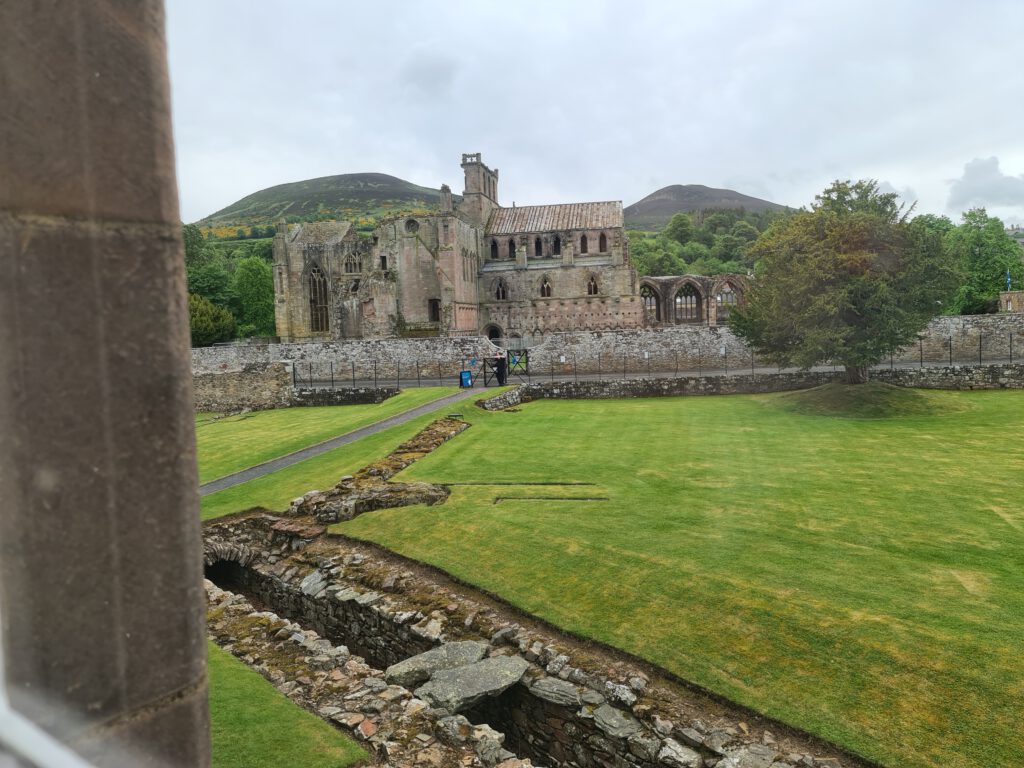
There is an inscription by John Morrow on one of the stairways ‘Be halde to ye hende’ which roughly translates into ‘Keep in mind, the end, your salvation’ it is today the motto of the town of Melrose and the statement with which I would like to finish this post given the historical importance and connection it once held in Scotland.

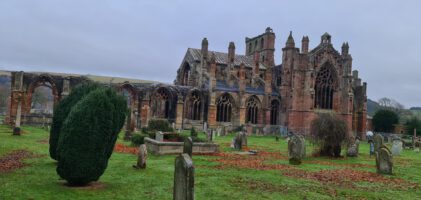
Pingback: Dryburgh Abbey – A scottish World
Pingback: St Cuthbert’s Way (Scottish Part) – A scottish World